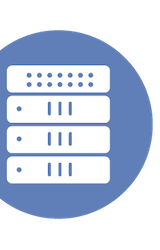Tech Field Day Coverage
Our delegate panel includes independent writers and thought leaders, and we collect their coverage of the event, Tech Field Day presentations, and sponsoring companies here.
Building Reliability
Tom Hollingsworth looks at the issue of network reliability. At Aruba Atmosphere, he saw some impressive reliability features, including a live non-disruptive controller upgrade during one of the presentations. Tom found it impressive, but thinks a lot of the focus on reliability, is perhaps not seeing the forest for the trees. For Tom, maybe the idea of creating incredibly robust networks that absolve users from error, Tom calls for more limitations and responsibility for people working on and using them. A little knowledge goes a long way to absolving an organization from the expense of designing an implementing the “foolproof” network.
Read More:
Ryussi MoSMB – High performance SMB
Chin-Fah Heoh saw a presentation from first time Storage Field Day company Ryussi, and they were talking about their MoSMB product, a proprietary SMB stack. Chin-Fah wondered what benefits it has over SAMBA, which has a long legacy and is free. Unlike SAMBA, MoSMB is designed for high availability and more demanding workloads. It also has support for enterprise grade applications like MS SQL and MSCS. Chin-Fah thinks there’s definitely an eager market for an enterprise-grade network file share system, and MoSMB seems up to the task.
Read More:
Ryussi MoSMB – High performance SMB
Nimble, HPE and 20-Year Old Architectures
Chris Evans looks at the recently announced HPE acquisition plans for Nimble Storage. He looks at both companies positions in the storage market, and the challenges and opportunities the acquisition will enable. For Chris, the key to the overall storage market is to increase customer share on relatively thin margins. If nothing else, Chris sees Nimble Storage as a way for HPE to gracefully retire 3PAR and provide a competitive offering in the space.
Read More:
Nimble, HPE and 20-Year Old Architectures
Vault7 Lessons – Zero Trust
Whenever you begin a piece about network trust with a quote from a Nicholas Cage film, you’re doing something right. Justin Cohen uses a quote from Con-Air as a springboard to the benefits of a zero trust network policy. He looks at how increased use of encrypted traffic requires a new methodology to secure networks, as it effectively kills deep packet inspections. Justin looks at solutions from Cisco and Illumio, which can be used as solutions in this new zero trust world.
Read More:
Selected as NFD 15 Delegate
Justin Cohen is heading back to Networking Field Day in April. He went to his first one in August, and found it awesome to get hit by the networking fire house from all the presenting companies. We’ve already announced that TELoIP and IP Infusion will be presenting, with more companies to be announced soon. Make sure to check back, and set a reminder to check out all the live streamed videos!
Read More:
Storage Field Day (#SFD12) – Presenting Companies
Chanaka Ekanayake is going to his first Storage Field Day, and he’s excited by the list of presenting companies. We hope he’s enjoying the event. Remember that you can watch along with Chan right here, we’ll have live streams of all presentations.
Read More:
Storage Field Day (#SFD12) – Vendor line up
Uila: Visions of the Future
Uila presented at Tech Field Day last month, and Teren Bryson wrote up a look at their data center analysis solution. While there’s no dearth of overall analysis tools, Uila really impressed Teren by offering visualizations that he called “nothing short of stunning”. This information is gathered by virtual smart taps, which is able to intelligently provide application visibility.
Read More:
Storage Field Day 12 – Day 0
Dan Frith wrote a preview for Storage Field Day this week, including a link to all times of the presentations, and a link to the live stream. And if that’s not enough, there’s even a picture of some delicious moussaka!
Read More:
HPE is buying Nimble Storage
Andrea Mauro wrote up a reaction to the announced plans for HPE to acquire Nimble Storage. Andrea thinks HPE already had a solid storage portfolio, so he found it very surprising. Ultimately he thinks the key to this acquisition might be Nimble’s non-storage products. This includes InfoSight and their Nimble Cloud Volumes. For Andrea, these seem to offer something that HPE currently doesn’t have in their portfolio.
Read More:
Cisco Wants You to Use APIs and It Shows
Gabriele Gerbino attended Cisco Live Europe and at a Tech Field Day Extra presentation saw how Cisco is trying to simplify campus networks with Digital Network Architecture. He reviews how Cisco is bringing automation features specific for campus networks to their enterprise switches, and what the practical implications are.
Read More:
Cisco Wants You to Use APIs and It Shows
SD-WAN Series Part 3: Silver Peak EdgeConnect
Eyvonne Sharp continues her excellent video series looking at SD-WAN. This time she’s talking about Silver Peak, who presented at Networking Field Day last month. Notably, due to their end-to-end control, Silver Peak is able to identify applications based on the very first packet received.
Read More:
SD-WAN Series Part 3: Silver Peak EdgeConnect
LoRaWAN: Cisco’s Sensor Solution for IoT
Rich Stroffolino looks at some of the interesting ideas coming out of Cisco Live Europe. For their approach to IoT, Cisco is utilizing LoRaWAN, which allows for low power sensors to last up to 10 years on an embedded battery. For systems that only require infrequent send and receive, it’s a compelling idea.
Read More:
LoRaWAN: Cisco's Sensor Solution for IoT
Touching the physical world: Veeam Agents for Windows & Linux
Andreas Lesslhumer looks at Veeam’s efforts to become as renown in the physical server space as they are in the virtual one. With the Veeam Agent products for Windows and Linux, Andreas sees them making significant strides. The Windows Agent allows users to restore backups directly to Hyper-V or Azure, has source-side encryption, and full support for Windows Server 2016. Andreas gave it a spin, and so far it’s proven easy to install and as capable as you’d expect from Veeam.
Read More:
Touching the physical world: Veeam Agents for Windows & Linux
Confirmed: I’ll be a Delegate at Storage Field Day 12
Dave Henry is coming to Storage Field Day next week, and we can’t wait! He published a blog post, running down the presenting companies he’s most excited about. If you want to watch along live with Dave, check back on March 8-10 for live streamed coverage. And ask any questions on Twitter with #SFD12.
Read More:
Confirmed: I’ll be a Delegate at Storage Field Day 12
Viptela: SD-WAN for Enterprise
Peter Welcher wrote a piece on what he saw from Viptela from November’s Networking Field Day. Unlike other SD-WAN vendors specifically targeting service providers, Viptela is squarely focused on the enterprise. Peter seemed really impressed not just by Viptela’s robust routing capabilities, but also their security. Their solution easily allows for rekeying, and includes tamper proofing. If someone gets a hold of an edge device, they won’t be able to use it to backdoor into your network. Seems like a lot of really well thought out solutions!
Read More:
Viptela: SD-WAN for Enterprise
PQ Show 106: Whitebox, SD-WAN & More – An NFD14 Wrapup
It’s a Networking Field Day delegate super show on the latest episode of the PQ Show podcast! Greg Ferro, Drew Conry-Murray, Eyvonne Sharp, and Kevin Myers all give their impressions from Networking Field Day from January. SD-WAN, Whitebox networking, analytics, and orchestration are all on the table. Give it a listen and check out our video coverage for more details.
Read More:
PQ Show 106: Whitebox, SD-WAN & More - An NFD14 Wrapup
Platform9 Simplifies Cloud Infrastructure
At Tech Field Day, Platform9 presented on their unique cloud solution. Rich Stroffolino came away impressed. It’s essentially a service for easing the setup and maintenance of a private or hybrid cloud. This can make the deployment of OpenStack and Kubernetes done in a matter of minutes, with none of the maintenance headaches to worry about down the line.
Read More:
Platform9 Simplifies Cloud Infrastructure
Cisco and Apple Now Support Better Wi-Fi, QoS for Apps
Rich Stroffolino reviews the results of Apple and Cisco partnership after roughly a year. The two major announcement help add QoS to iOS apps, and improving wireless performance. The Fast Lane technology allows administrators to setup whitelists for specific apps. These apps mark outgoing packets with QoS qualifiers that will be recognized on a Cisco network, and otherwise won’t impede performance. Wi-Fi roaming is improved by using native Cisco Access Point intelligence on top of the already supports 802.11k/v protocols. Overall, its a promising initial set of announcements from the collaboration.
Read More:
Cisco and Apple Now Support Better Wi-Fi, QoS for Apps
Thoughts on Consumer and Industrial IoT
Massimiliano Mortillaro shares some thoughts on the current state of IoT. From the enterprise side, he likes the fact that we’re leaving the pure hype phase of the segment, something that couldn’t be said in 2016. At Cisco Live Europe, he saw some very practical implementations, particularly Cisco’s LoRaWAN technology, which enables devices to operate up to 10 years on an embedded battery. He also considers some of the security and, perhaps most importantly, ecological considerations of the coming age of IoT. It’s a really interesting overview of the space, and will get you thinking about how to prepare for the coming IoT deluge of devices.
Read More:
Thoughts on Consumer and Industrial IoT
SD-WAN Series Part 2: Riverbed SteelConnect
Eyvonne Sharp posted a second video in a series on SD-WAN. This time, she goes into her thoughts on Riverbed’s SteelConnect. She sees this as an elegant implementation, integrating the SD-WAN assets from Ocedo into their existing WAN optimization portfolio. Eyvonne was also really impressed by their policy configuration tools, which have simple on-off switches and allow for easy rollback. It’s a great look at the product, and we can’t wait to see more in the series!
Read More:







